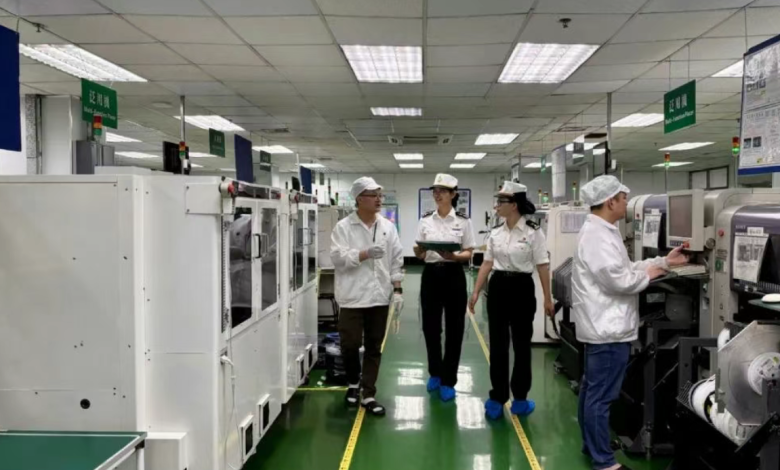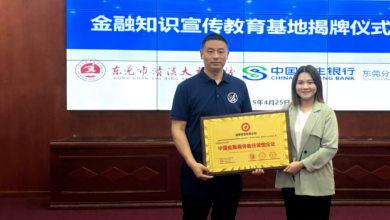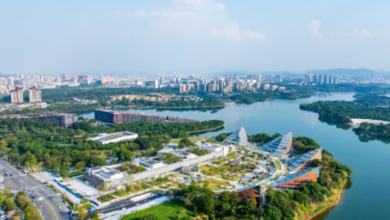Dongguan’s Foreign Trade Hits Record High with 17.4% Growth in First Five Months


Impressive Growth Despite Global Challenges
As someone who has closely followed Guangdong’s economic trends for years, I was particularly impressed by the latest trade figures from Dongguan. According to statistics released by Huangpu Customs, Dongguan’s import and export value reached an astonishing 615.85 billion yuan in the first five months of 2025—a historic high for the same period and securing its position as Guangdong’s second-largest trading hub.
What truly stands out is the 17.4% year-on-year growth, surpassing the provincial average by 13.5 percentage points. In my experience covering regional economies, such resilience is rare given the current complexities in global trade, including supply chain disruptions and fluctuating demand.
A prime example of this dynamism can be seen at the Qiying Cross-Border E-Commerce Industrial Park in Shatian Town. During a recent visit, I observed workers efficiently sorting electronics and daily necessities destined for Malaysia. As Hongyuan Group’s Deputy General Manager Qin Jianyu noted, “Cross-border e-commerce has become a vital channel for our export expansion.”
Private Enterprises Lead the Charge
One of the most compelling aspects of Dongguan’s trade surge is the outsized role played by private enterprises. Data shows they contributed 385.68 billion yuan in trade volume, marking a 25.7% increase and accounting for 62.6% of the city’s total. This growth single-handedly boosted Dongguan’s overall trade performance by 15 percentage points.
Foreign-invested enterprises also saw steady growth at 8.5%, but it’s clear that homegrown businesses are driving innovation. Take Jinhong Sheng Electric Co., Ltd. in Changping Town—a Guangdong-based high-tech firm specializing in cooling systems. During my tour of their facility, Manufacturing Center Director Xie Jingfu shared that their portable air conditioners, popular in 40+ countries, saw a 10% order increase by May. Their success lies in smart market diversification, with peak daily production hitting 8,000 units to meet demand from the Americas and Europe.
Emerging Markets and Key Export Products
Dongguan’s trade strategy brilliantly balances reliance on traditional partners with exploration of new frontiers. While ASEAN remained the top market (up 45.5%), significant growth was also seen in trade with India, the UAE, and Central Asia.
From an export perspective,机电products (up 15.4%) dominated, particularly integrated circuits, electrical equipment, and computer parts. Even labor-intensive goods, often vulnerable to global shifts, grew by 2.8%. I’ve noticed that Dongguan’s focus on high-value tech exports—rather than competing solely on low-cost manufacturing—has been a game-changer.
Government Policies Fueling Success
Behind these numbers lies robust policy support. In April, Dongguan introduced a 30-point plan to stabilize trade, including expanded export credit insurance and跨境电商subsidies. By July, the Commerce Bureau rolled out additional funding initiatives covering logistics and market expansion—a move I’d recommend other cities study.
Having witnessed similar policies elsewhere, Dongguan’s targeted approach stands out. For instance, their subsidies for SMEs to attend international trade fairs have directly linked local businesses to global buyers.
Conclusion: A Model of Resilience
Dongguan’s story isn’t just about numbers—it’s a masterclass in adapting to global headwinds. Through enterprise innovation, market diversification, and government-industry synergy, the city has crafted a sustainable trade blueprint. As global uncertainties persist, I believe Dongguan’s strategies offer valuable lessons for export-driven economies worldwide.
Source: Dongguan+ Client
Pro Tip for Businesses: If you’re exploring cross-border e-commerce like Dongguan’s success stories, prioritize markets with rising demand for niche products (e.g., portable ACs in climate-vulnerable regions). Always leverage local policy incentives—they can significantly offset initial operational costs.
Would you like me to elaborate on any specific sector, like how Dongguan’s logistics infrastructure supports this growth? Let me know in the comments!





